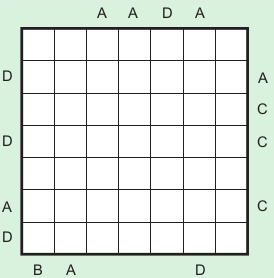My American friends often ask me for insights into why Grigory Perelman refused the one million dollar Clay prize for his proof of the Poincaré conjecture. They are right to ask me: my life experience was very similar to Perelman’s.
I went to a high school for children gifted in math. I was extremely successful in competitions. I got my gold medal at IMO and went to college without entrance exams. I received my undergraduate and graduate degrees in one of the best math academic centers in Soviet Russia. Perelman traveled a similar path.
Without ever having met Perelman, I can suggest two explanations of why he might reject the money.
First explanation. To have it publicly known that you have suddenly come into money is very dangerous in Russia. Perelman’s life expectancy would have dropped immediately after accepting the million dollars. Russians that have tons of money either hide their wealth or build steel doors way before they make their first million. In addition to being a life hazard, money attracts a lot of bother. He would have been chased by all types of acquaintances asking for help or suggesting marriage proposals.
Second explanation. We grew up in a communist culture where money was scorned and math was idolized. The goal of research was research. Proving the conjecture was the prize itself. In his mind, receiving the award money might diminish the value of what he did. I understand this way of thinking, but I am personally too practical to follow such feelings and would accept the prize.
My first explanation has a flaw. Though valid, it doesn’t explain why he rejected the Fields medal. So I reached for the book abour Perelman, Perfect Rigor: A Genius and the Mathematical Breakthrough of the Century by Masha Gessen. I like Gessen’s explanation of why he rejected the Fields medal:
His objection to the Fields Medal, though never stated as clearly, seemed to have been twofold: first: he no longer considered himself a mathematician and hence could not accept a price intended for the encouragement of midcareer researchers; and second, he wanted no part of ICM, with all the attendant publicity, speeches, ceremony, and king of Spain.
The reasons are specifically related to the medal, so the Clay prize rejection might not be connected to the medal rejection. This argument slightly rehabilitates my first explanation.

I liked the book. It is a tremendous undertaking — writing about a person who doesn’t want to talk to anyone. After reading it, I have one more possible explanation of his refusal of the prize.
Perelman is a loner. One of the closest people to him was his math Olympiad coach. The coaches tend to understand the solutions on the spot, mostly because they already know them. If in his mind Perelman expected all mathematicians to be like his coach, then he might have expected a parade in his honor the day after he solved the conjecture. Instead, he got silence and attempts to steal the prize from him.
Can you imagine doing the century’s best math work without receiving congratulations for many years? The majority of mathematicians waited for the judgment of the experts, as did Perelman. The experts were busy and much slower than Perelman expected. The conjecture was extremely difficult, and it was a high-profile situation — after all, $1 million was attached to its solution. So the experts were very cautious in their pronouncements.
Finally, instead of congratulating Grigory, they said that the proof seemed to be correct and that they had not yet found any mistakes. If like Perelman, I was certain of my proof, I would have found this a painfully under-whelming conclusion.
Perelman expected to feel proud, but instead he probably felt unappreciated and attacked. Instead of the parade he may have hoped for, he had to wait for a long time, only to face disappointment and frustration. This reminds me of an old joke:
A genie is trapped in a lantern at the bottom of the sea. He vows, “I will give one million dollars to the person who frees me.” One thousand years pass. He changes his vow, “I will give any amount of money to the one who frees me.” Another thousand years pass. He ups the ante, “I will give any amount of money and two more wishes to the person who frees me.” Another thousand years pass. He promises, “I will kill the one who frees me.”
Third explanation. Perelman was profoundly disappointed in the math community. Unlike the genie, Perelman didn’t want to kill anyone, but he did want to express his disillusionment. Perhaps that is why he rejected a million dollars.
Share:






 Do you like challenging puzzles? Are you tired of sudoku? Here’s your chance to try your hand at puzzles that are designed for world puzzle championships.
Do you like challenging puzzles? Are you tired of sudoku? Here’s your chance to try your hand at puzzles that are designed for world puzzle championships.

 I have a problem with my binocular vision. The muscles that are responsible for moving my eyes outwards are very weak, much weaker than the muscles that move my eyes inwards. When I am very tired, I can’t focus on people or things that are far away. I start seeing doubled monsters with extra eyes and noses.
I have a problem with my binocular vision. The muscles that are responsible for moving my eyes outwards are very weak, much weaker than the muscles that move my eyes inwards. When I am very tired, I can’t focus on people or things that are far away. I start seeing doubled monsters with extra eyes and noses.